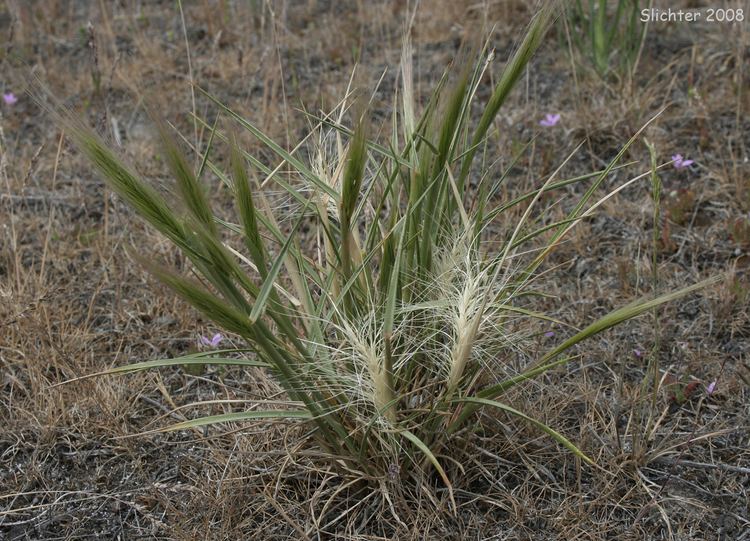Rank Species | Genus Elymus Higher classification Elymus | |
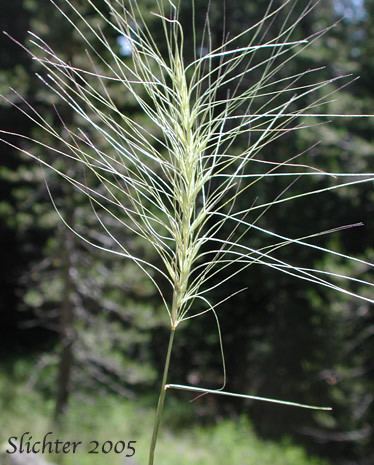 | ||
Similar Grasses, Elymus, Pseudoroegneria spicata, Poa secunda, Oryzopsis hymenoides | ||
Elymus elymoides is a species of wild rye known by the common name squirreltail. This grass is native to most of North America west of the Mississippi River. It occurs in a number of ecosystems, from the alpine zone to desert sage scrub to valley grassland.
Contents
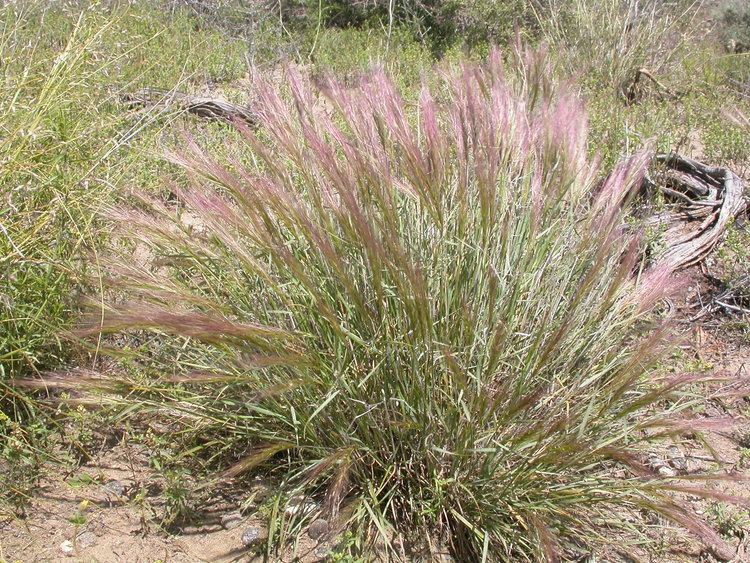
Description
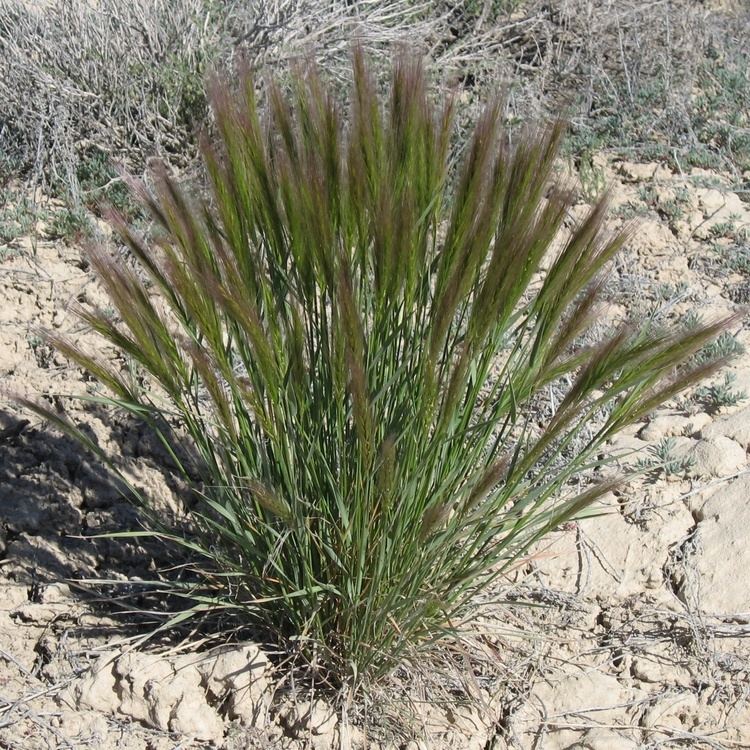
Elymus elymoides is a perennial bunch grass growing to around half a meter in height. Its erect solid stems have flat or rolled leaf blades. The inflorescence is up to 15 centimeters long and somewhat stiff and erect, with spikelets one or two centimeters long not counting the awn, which may be 9 centimeters long and sticks straight out at maturity, making the inflorescence look like a bottlebrush (see main image), and aiding wind dispersal of the seeds. In contrast, the early-season spike is compact and reddish, as in images at left.
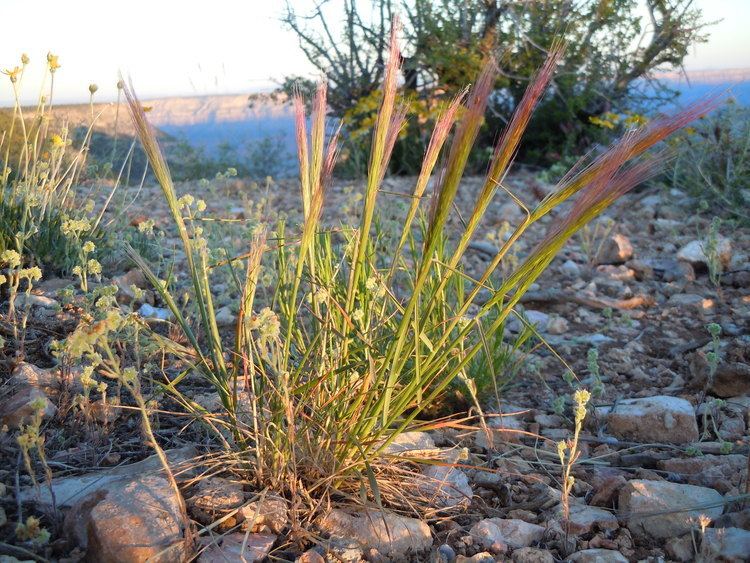
This grass is considered a very good forage for sheep. It is best for grazing during the winter, when it is small and green. It becomes less palatable to livestock when its awns grow long and sharp at maturity.
Economics and Competition
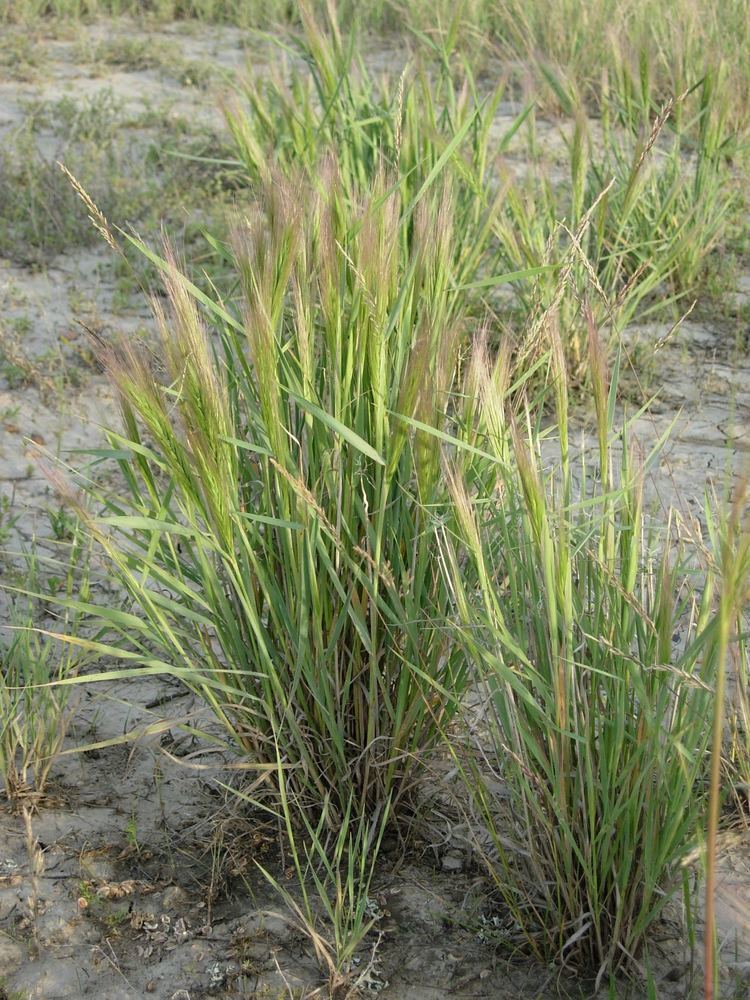
The genus Elymus is a part of the Poaceae family, which is considered to be the most economically important plant family in modern cultures. Evolving 55 million years ago, the Poaceae family is used to produce wheat, rice, and barley cereal grains. Elymus elymoides (also known as squireltail) is a specific type of wild rye that experiences competitive forces when introduced to invasive species, such as Bromus tectorum. Elymus elymoides experiences a decrease in fitness when growing concurrently with Bromus tectorum, leading to natural selection act negatively on Elymus elymoides. This is seen in the Great Basin Desert, as the dry environment makes water a limiting resource, resulting in competition over it. Bromus tectorum’s advantages may be due to their ability to re-engineer that particular ecosystems scarce water supply. Bromus tectorum affects Elymus multisetus similarly, indicating that the trait causing their decreased fitness is shared among the genus. Competition also occurs between Elymus elymoides and the invasive crested wheatgrass. When introduced, crested wheatgrass negatively affects Elymus elymoides when mature, despite being able to effectively compete at the seedling stage. If crested wheatgrass is used in rehabilitation or restoration of a site, then co-planting a native bunch grass, such as Elymus elymoides, would be helpful in preventing a crested wheatgrass mono culture. Because Elymus elymoides populations decline when introduced to certain populations, squirreltail may benefit more from a monoculture setting This characteristic is supported by another species Elymus nutas. However, although it is successful as a monoculture food source, it results in a reduction of carbon transfer and decreased soil health when grown alone. To preserve a prosperous "Elymus elymoides" food source, one must take into consideration its effects to the soil when grown alone, and its responses to competitive forces if grown with other plants.
Subspecies
Subspecies include:
